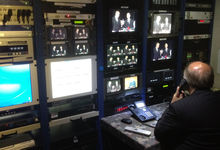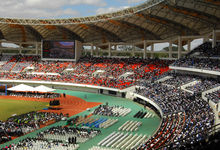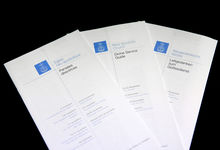International Mother Language Day: bridging cultures with words
“Come, let Us go down and there confuse their language that they may not understand one another’s speech.” Six thousand languages have developed since then, and everyone speaks at least one of them: their mother tongue.

The people wanted to build a tower with its top reaching into heaven. Their undertaking ended in a fiasco, the confusion of languages, which we can read about in the Bible. The people were no longer able to understand each other (Genesis 11).
There are 6,000 languages worldwide with a downward tendency. Languages can become extinct. Every year languages die because there are no speakers left. About 3,000 languages are currently in danger. That is one reason why UNESCO announced the first International Mother Language Day in the year 2000. The day is observed every year on 21 February.
“International Mother Language Day marks the significance of language and its cultural heritage. The day is observed to promote and preserve linguistic diversity and the mother tongue and to strengthen people’s awareness for linguistic and cultural traditions,” UNESCO explains. A particular focus is on so-called minority languages, languages which are spoken by less than 10,000 people. Subsequent generations are no longer taught these languages, meaning that not only the languages themselves go lost but also people’s identity.
Language connects and mediates
To make yourself understood to someone who does not speak your mother tongue, you need a translator or an interpreter. Through their work, the meaning becomes clear. At the same time, they promote the world’s linguistic diversity and bring people together—across language barriers.
People who understand, speak, and write a number of languages apply their knowledge and experience across geographical and cultural borders. Also brothers and sisters of the New Apostolic Church are involved in this communication process. Without them there would be no nac.today, no community, and no interpreting in divine services.
“My favourite language is the German language, because it is the language of my ancestors, which I spoke as a little girl,” Elisabet says. She has been working as a translator and interpreter for the New Apostolic Church in South America for nearly 30 years. “I see myself as an instrument so that the treasures that are hidden in one language can also be understood by people who do not know this language, and make them rich.” This is Elisabet’s motivation for her work, which is not always easy.
Language of faith: a special focus
Besides mother tongue and foreign tongue, or first and second language, there is also the language of faith, Jacky says, whose first language is French. The Catechism, for example, speaks a formal language. Over many pages, the book describes the doctrine of our Church; not always in the vernacular of ordinary people, but with words that allow for theological depth and can also cause a translator some headaches as to how they will be received in the target language. He says he was not really worried about the translation as such, but he did feel a special responsibility when he “realized how daring the venture was”, he says and smiles.
And David, who interpreted at the 2015 Pentecost service in Zambia, says about the moments before the service, “I pored over some of the special vocabulary just before the service and did a few elocution exercises, and above all I prayed. Just before the service I left my booth and went inside the stadium to soak up some of the amazing atmosphere with our brothers and sisters from Zambia.” Interpreting a sermon is something completely different than translating, say, the operating instructions for a television set; and this is not only on account of the dialects spoken by the assisting Apostles.
Source language and target language
The sub-heading raises awareness of the problems faced by translators. Asked what makes translating so challenging, Jacky explains, “The challenge is to say (almost) the same thing in the target language as in the source language, and this in the best possible way in the target language and in the same quality as the source language.”
Learning foreign languages
And what is the best way to learn a foreign language? Sonia, who also speaks several languages, advises parents that children should begin to learn a second or third language as early as possible. “One way is to make it possible for them to come into contact with other languages on a regular basis.” Small children pick up a foreign language in no time.
Her colleague, Jacky, adds, “Actually, for me, there is only one way: to immerse oneself in the cultural environment of the language one wants to learn, and then having to interact and react without being able to fall back on one’s native tongue. This way you discover that you are dealing with other people and not only with abstract grammatical rules; there are always ways to make oneself understood.”
The Chief Apostle’s other woman
As complicated as it can sometimes get, it also has its amusing sides. Elisabet reports about a bit of an incident in a divine service in which she was interpreting District Apostle Norberto Passuni. “The District Apostle said, ‘There is another woman in our Chief Apostle’s life now.’ I hesitated and looked at him. He laughed and told me to go on and say it just as he had said it.” The other woman, it turned out, was Chief Apostle Wilhelm Leber’s granddaughter. He had just become grandfather.”
UNESCO: International Mother Language Day
UNESCO: Atlas of the World’s Languages in Danger
Photo: Oliver Rütten
Article info
Author:
Date:
Keywords:
Oliver Rütten
20.02.2016
Divine service,
Social commitment,
International









